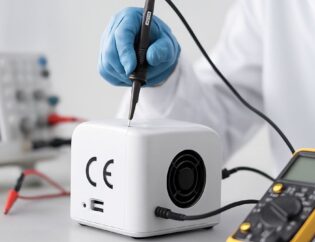
CE Certificate and the ATEX Directive: Safety Standards in Explosive Atmospheres
In industrial facilities—especially in environments containing explosive gases, vapors, mists, or dust—the safety of the equipment used is of critical importance. To protect both workers and facilities in such hazardous areas, the European Union has established the ATEX Directive. For products covered under the ATEX Directive, obtaining a CE Certificate demonstrates that the product complies with relevant safety standards.
What is the ATEX Directive?
ATEX comes from the French term "Atmosphères Explosibles" and refers to regulations concerning explosive atmospheres. The European Union has issued two main ATEX directives:
- 2014/34/EU ATEX Directive – Applies to equipment and protective systems intended for use in explosive atmospheres.
- 1999/92/EC Directive – Focuses on the protection of workers from explosive atmosphere risks.
The Relationship Between the CE Certificate and the ATEX Directive
All equipment and protective systems falling under the 2014/34/EU ATEX Directive must bear the CE mark. This mark indicates that the product:
- Is designed to minimize risks related to explosive atmospheres,
- Complies with European Union safety standards,
- Has undergone the necessary testing and evaluations,
- Has a complete and properly prepared technical file and documentation.
This certification allows the products to move freely within the European market.
Equipment Covered Under ATEX
The ATEX Directive applies to a wide range of devices and systems used in explosive environments.
Examples:
- Electrical equipment: motors, generators, lighting systems
- Mechanical equipment: pumps, fans, valves
- Protective systems: explosion suppression and isolation devices
Classification:
- Category 1 and 2: Equipment used in underground mines
- Category 3: Equipment used in surface industrial facilities
ATEX Conformity Assessment Process
For equipment intended for use in explosive atmospheres, obtaining a CE Certificate involves several stages:
- Risk Analysis – Identifying explosion risks related to the equipment
- Design and Testing – Verifying that the device is manufactured in compliance with ATEX standards
- Preparation of the Technical File – Compiling all technical documentation related to the product
- Notified Body Approval – For some product categories, conformity assessment by an independent Notified Body is required
Why Are ATEX and the CE Certificate Important?
- Safety: Ensures the protection of workers and facilities from explosion risks
- Legal Requirement: Products covered by ATEX cannot be sold in the EU market without the CE mark
- International Trade: The CE Certificate also facilitates product acceptance in non-EU countries that recognize the CE mark
Ensuring that equipment used in explosive environments complies with the ATEX Directive and CE certification requirements is both a legal obligation and a fundamental safety necessity. The entire conformity process—from risk assessments and testing to technical documentation and, when required, Notified Body approval—must be meticulously managed.
A well-managed CE certification process not only guarantees product safety but also enables free movement of products in the European market.









